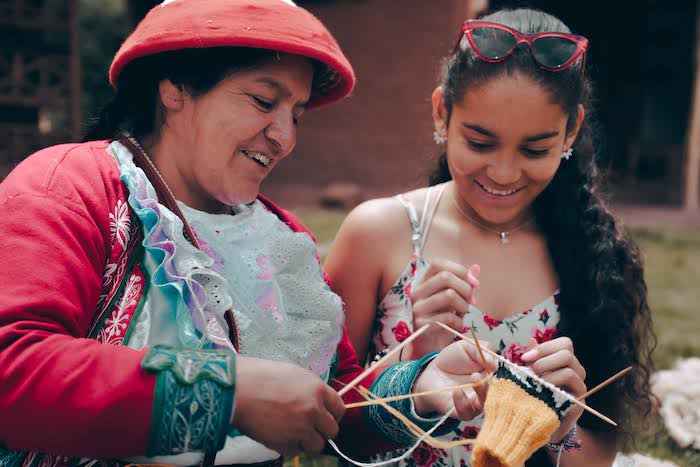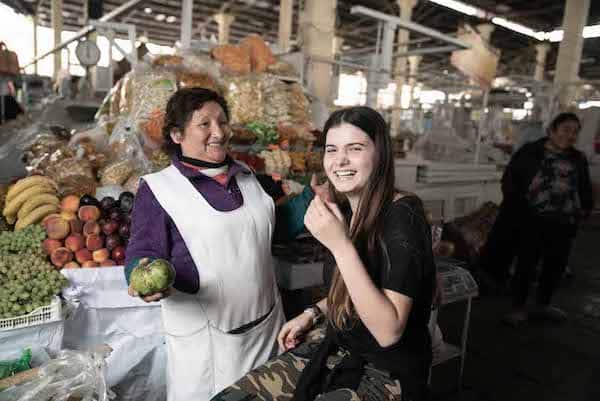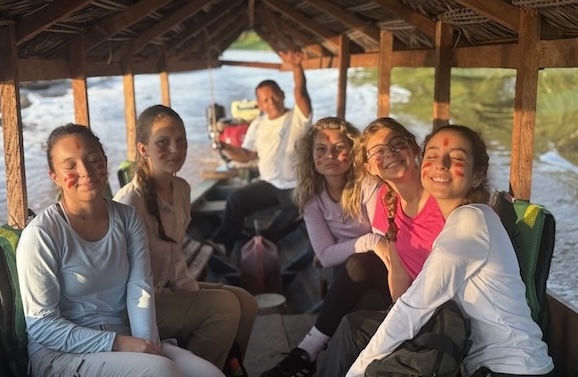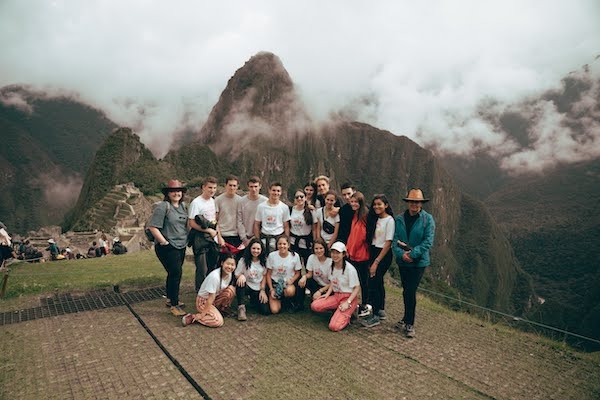Peru
Peru Trips: Experience ancient civilisations
Few countries boast a blend of native cultures, world-class cuisine and picture-postcard landscapes like Peru. It’s no surprise people from all over the world pin this South American country at the very top of their bucket list.
Visitors can immerse themselves in Quechua culture and learn about ancient traditions that still exist today. The more adventurous can tackle some of the continent’s most memorable and challenging Andean treks, especially in the Sacred Valley and towards the unmissable, UNESCO-listed Machu Picchu.

Want to learn more?
Popular student trips in Peru
Peru trip information
Visa and entry requirements
Visitors to Peru require a passport with a validity of at least six months. Some nationalities may require a visa, but citizens of the US and Canada can enter without one. Make sure to check your country’s requirements before booking your trip.
Language
Spanish is the official language of Peru, and you’ll also hear many Indigenous languages like Quechua and Aymara. English is widely spoken in tourist areas.
7 must-do activities in Peru
Visit Machu Picchu
Explore Cusco on a walking tour
Sample ceviche in Peru’s foodie capital, Lima
Discover Rainbow Mountain on a day trip
Take a boat ride along the Tampopata river in the Peruvian Amazon
Enjoy a train ride through the Sacred Valley
Hike Andean peaks near Huaraz
Weather
The climate in Peru varies depending on when you visit. The rainy season (roughly December to March) sees much heavier rainfall in both the Andes and the Amazon, so the dry season (May to October) might suit your plans more. Coastal areas remain dry and mild for most of the year.
Sustainable hotels
- Treehouse Lodge in Iquitos is a good sustainable option in the Peruvian Amazon. The lodge runs on solar power, water is purified directly from the river, and great care was taken to preserve the vegetation surrounding the hotel during construction.
- For those wanting to support local communities, Sol y Luna Hotel near Cusco is an excellent option. The owners also run a school for underserved and vulnerable local children, and profits from the hotel go directly toward running it.
- Inkaterra Hacienda Urubamba – This hotel in the Sacred Valley of the Incas is committed to sustainable tourism and features organic gardens, an ecological orchard, and various conservation projects.
- Homestays are an excellent choice for travelers seeking an authentic cultural experience. Guests stay with local families, gaining unique insights into their daily lives, traditions, and work. Often a more affordable alternative to hotels, homestays also promote sustainable tourism by directly benefiting local communities. You can book a homestay through platforms like Airbnb or Homestay.
Currency
The official currency of Peru is the Sol, with US dollars also widely accepted. It’s recommended to exchange your money at authorized exchange houses to avoid scams.
Getting there
Lima’s Jorge Chávez International Airport is the best-connected in the country for international visitors. It has direct flights from various US cities including Miami, Atlanta, Fort Lauderdale, New York, Los Angeles, and Houston. Lima is also the hub for all other destinations in Peru such as Cusco.
Getting around
Public transport in Peru is widely available and can be an affordable way to get around.
Buses are the most common form of public transport in Peru, with both short and long-distance buses available. Local buses are often crowded and stuffy, but cheap. Long-distance buses are more expensive – but are more comfortable and have air conditioning.
Taxis are plentiful in Peru, especially in urban areas. They are not metered, so it is important to negotiate the fare with the driver before starting the journey. It’s a good idea to use licensed taxis or ride-hailing apps to ensure safety.
Colectivos are shared taxis or vans that follow specific routes. They are often cheaper than taxis but can be crowded and uncomfortable.
Metro: Lima has a modern metro system with two lines, which can be a fast and convenient way to get around the city.
Peru travel guides
Keen to read an Peru travel guide? The world-famous Lonely Planet book is a good place to start!
Food and drink
Peruvian cuisine is one of the most diverse and exciting in the world, blending influences from Indigenous cultures, Spanish colonizers, African slaves, and Asian immigrants. The country’s varied geography and climate have also contributed to the development of distinct regional cuisines.
Some of the most popular dishes in Peru include ceviche, a dish of raw fish or seafood marinated in lemon or lime, typically served with sweet potato and corn; lomo saltado, a stir-fry of beef, onions, tomatoes, and potatoes; ají de gallina, a creamy chicken stew flavored with aji peppers; and causa, a layered dish made with mashed potatoes, avocado, and seafood or chicken.
Safety
Peru is a safe country for tourists, but it’s always wise to exercise caution when traveling. Don’t carry large amounts of cash or valuables, and be aware of your surroundings, especially at night.
Frequently asked questions
What's the best time to visit Peru?
The best time to visit Peru is between May and September when the weather is mild and dry.
Do I need any vaccinations to visit?
No vaccines are obligatory to enter Peru. The Center for Disease Control recommends visitors to get vaccinated for hepatitis A and B, typhoid, and yellow fever. It’s wise to check their Peru page well ahead of your trip to see if there has been any recent changes.
Is it safe to drink tap water in Peru?
It’s recommended to drink bottled water in Peru to avoid getting sick
.
Do I need to know Spanish to travel to Peru?
While it’s not essential to know Spanish, knowing a few basic phrases can be helpful in communicating with locals.
What is the altitude like in Peru?
Many parts of Peru are at high altitude, with some areas exceeding 13,000 feet. Altitude sickness can be a problem for some visitors, so it’s important to take it slow and acclimatize gradually. Drinking plenty of water and avoiding alcohol and strenuous activity can also help prevent altitude sickness.
Do I need a Covid vaccine to enter?
There are no COVID-19 requirements for most visitors to enter Peru. You don’t need to show a negative test or a vaccination card. Visitors from the US can find more information on the US Embassy website.
How do I visit Machu Picchu?
It is straightforward to explore Machu Picchu on a day trip, but you will need to buy tickets well in advance as there is a cap on the amount of daily visitors. You can also spend a few days hiking to Machu Picchu on one of the famous Inca treks, but these trips sell out even further in advance. The village of Aguas Calientes, close to the archeological site, is easily accessible from Cusco by train.





